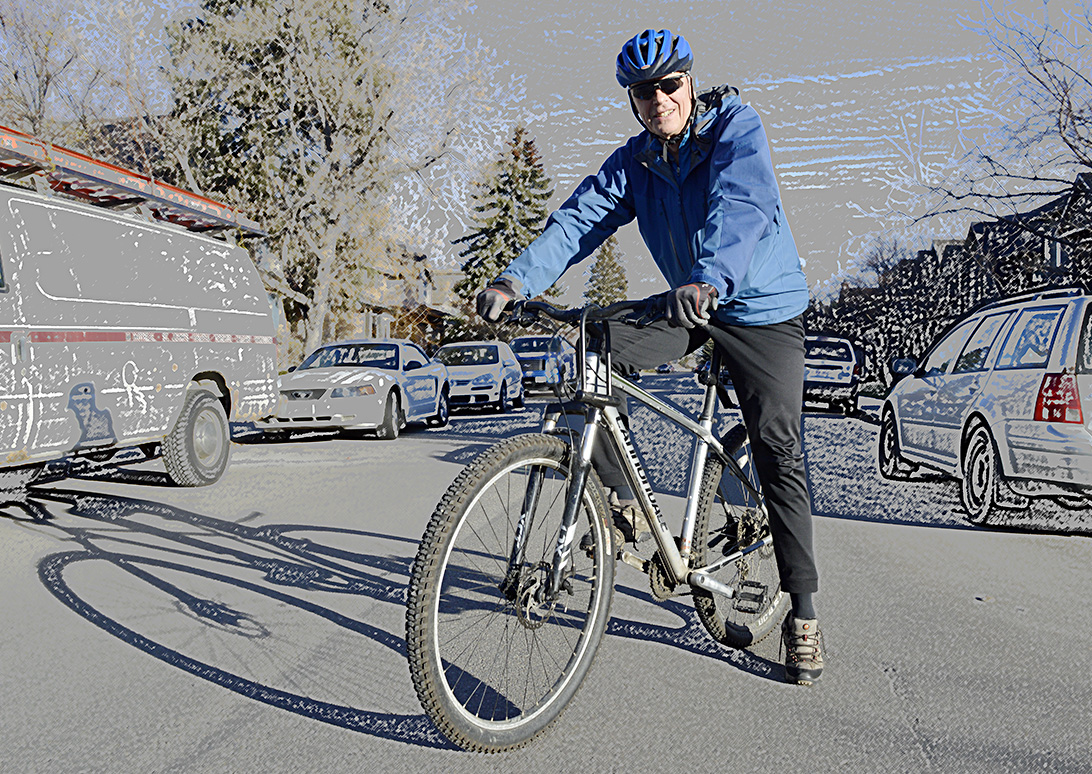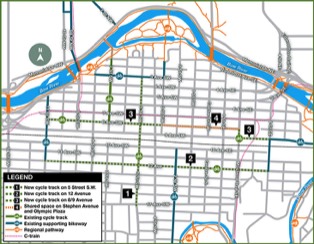The frugal cyclist
Story and photos by Wyatt Tremblay
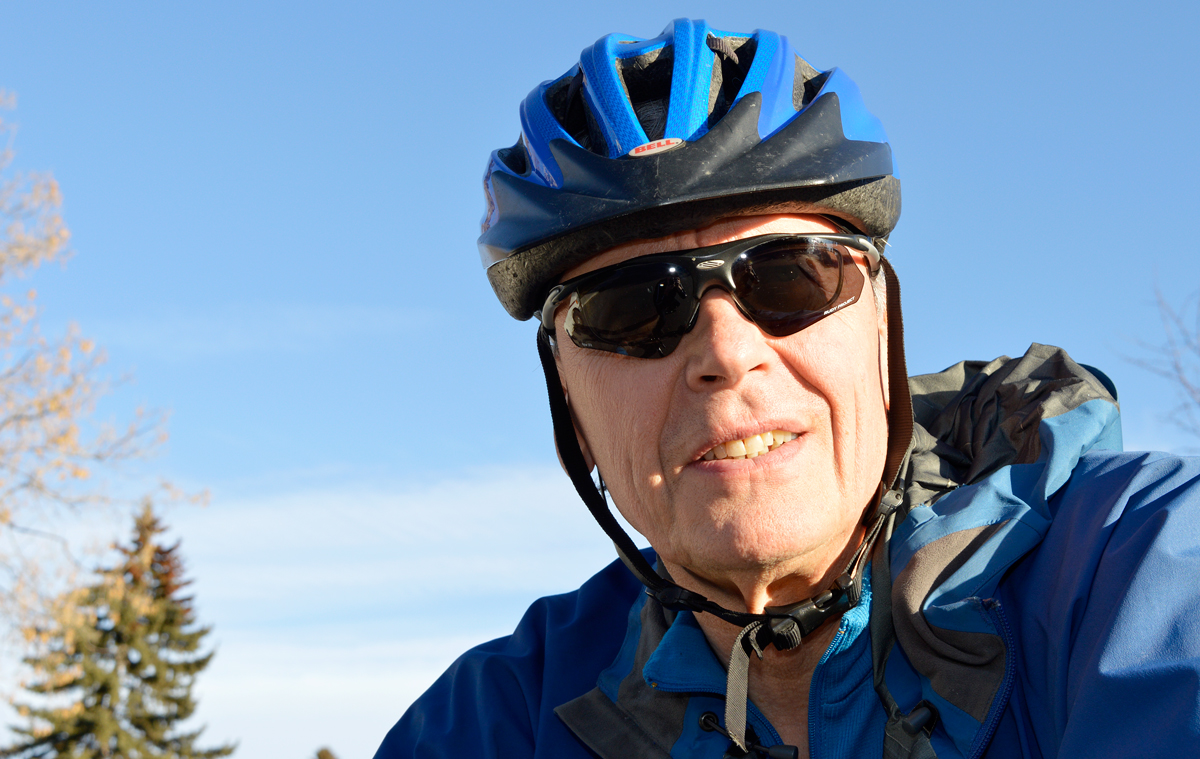
Calgarian Ian Whitmore has cycled to work for 35 years. He does it, he says, because it’s cost efficient.
According to the findings of a 2010 project from the University of Calgary, the majority of winter cyclists in Calgary are middle-aged men who will brave temperatures down to -20C.
Ian Whitmore is one of those middle-aged cyclists.
“I have ridden to work on a daily basis for 35 years, all four seasons of the year,” he says from the warm comfort of his home in Calgary.
Whitmore, a senior benefits advisor for Imperial Oil, has lived in Calgary for 10 years. Before that, he lived and biked in Toronto.
Why does he do it?
“Basically, I’m frugal,” Whitmore says with a laugh, “It’s cost efficient.”
Plus, a bike ride, he says, is as good as a cup of coffee.
“It wakes you up!”
Biking in the city is about survival, as much as it is about commuting.
Ian Whitmore
Cycling as a way of life …
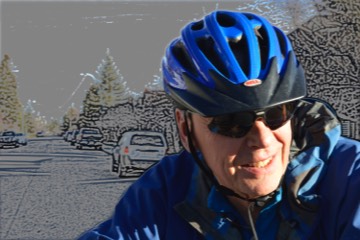
The U of C report suggests that Calgarian cyclists travel an average of 10 kilometres to work. Whitmore has always lived close to his place of work, and has, he says, always managed to be within 20 minutes.
His love affair with the bicycle began when he was in university. He couldn’t afford a vehicle, so the bicycle became a way of life, one he has never given up, even at the age of 61.
“As a way of life,” he says, “Though, you smell. You have your sweaty bike clothes on, and 99 per cent of people will not live this.”
Especially in a cold climate like Alberta, he explains.
I have cycled to work for 35 years, all four seasons.
Ian Whitmore
The science of winter cycling …
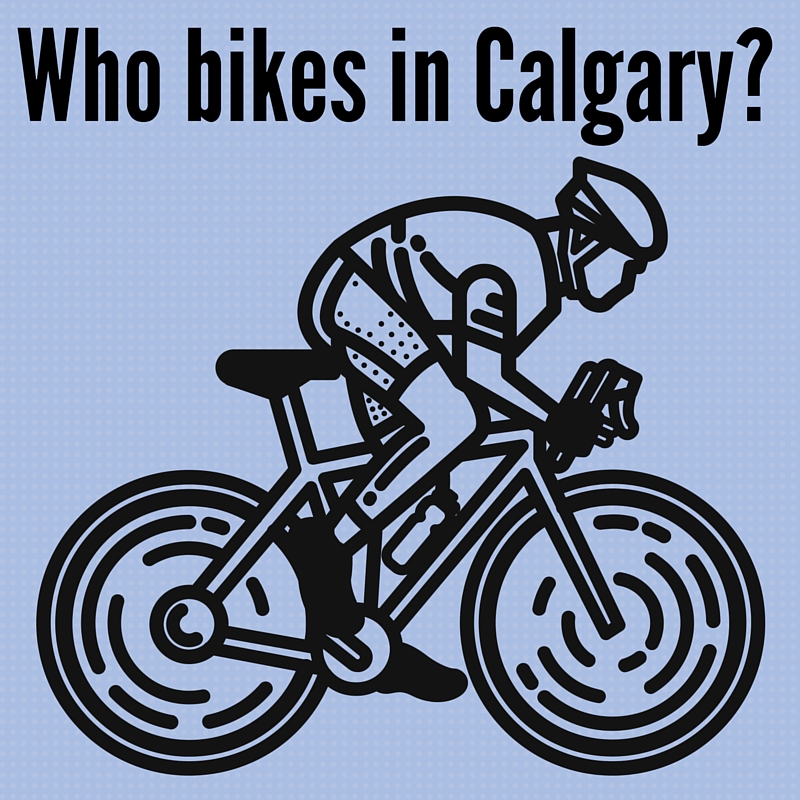
Also, according to the study, several thousand Calgarians ride their bicycle to work every day for the entire year. About 40,000 Calgarians ride their bicycle for transportation purposes regularly in the spring, summer, and fall with 140,000 Calgarians riding bicycles for recreation at least once a week. About 400,000 Calgarians ride at least occasionally the study says.
It’s the stuff you see, hear, and smell.
Ian Whitmore
The elementals of cycling …
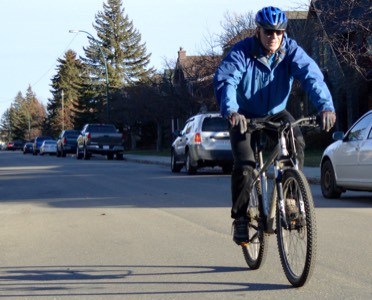
During the non-winter months, Whitmore enjoys riding out to the countryside.
“It’s the stuff you see, hear, and smell in a way that you don’t in a car.”
He makes several trips a year out to Bragg Creek, Banff, Airdrie, and other places within a day’s ride there and back.
City riding is similar to cycling in the country, he says, except that where outside the city you are “assaulted” with the elements of the open road, in the city you are “assaulted” with the unpredictability of people and traffic.
He was recently riding down 14th Street when an SUV pulled up beside him and a young woman rolled down a window on the passenger side and yelled at him.
“You’re not a bike,” she said.
“I have every right to be on the road,” Whitmore says of the incident.
He says he is a stickler for following the rules of the road, but he has had every imaginable traffic incident happen to him.
“I’ve been hit by animals; and I’ve been hit by cars; by people; you name it.”
And yet, he’s never been seriously injured.
“I’ve been very lucky,” Whitmore agrees.
I’ve been hit by animals; and I’ve been hit by cars; by people; you name it.
Ian Whitmore
“Fall as if you’re drunk.”
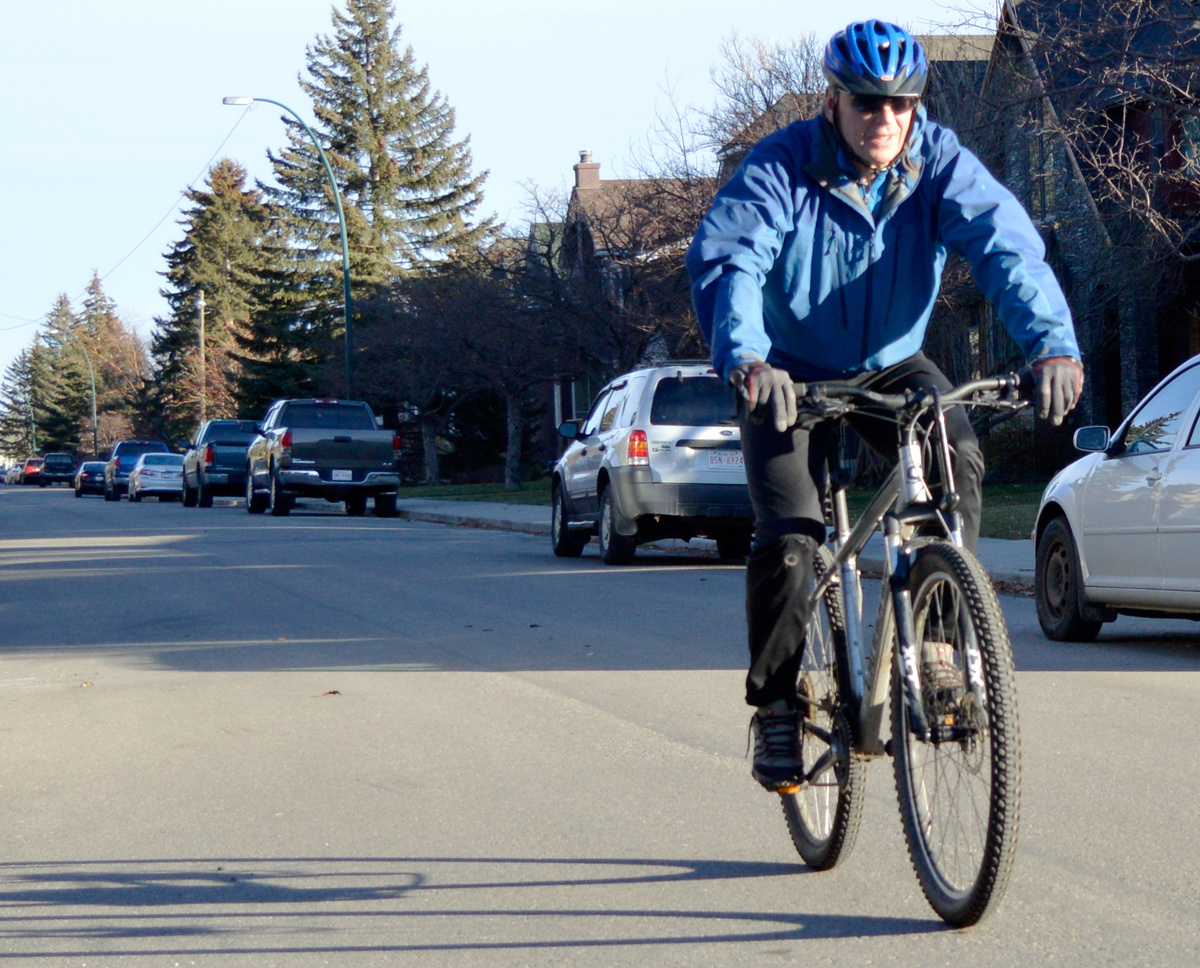
He couldn’t avoid the vehicle and struck it straight on, flying over the hood of the vehicle, landing face down on the pavement on the other side.
He wasn’t hurt, but he was angry.
“You can yell and scream at these people,” Whitmore says, “but I figured the best punishment is to scare them.”
He lay there on the pavement, “playing dead,” as the man ran around the vehicle to stand over him.
“Talk to me, talk to me,” he said. “I’m a doctor.”
But Whitmore didn’t respond and the man rolled him over.
At this point, Whitmore is sure the man isn’t really a doctor, as one would not have rolled him over without ascertaining the extent of his injuries.
It turned out the man was a psychiatrist, Whitmore laughs.
“Which explains the ‘talk to me, talk to me.’”
He falls every year but the most he’s been injured is a scrape or two.
“The secret,” he says, “is to fall as if you’re drunk. Just go totally limp. It works.”
“If you’re going to be a safe rider,” Whitmore says, “You assume that every car is out to hurt you in some way.”
“Biking in the city is about survival, as much as it is about commuting.”
He’s also had his bike stolen. Does he go to the police?
Whitmore’s attitude? “Who’s got time to do that?”
And, he says, the police won’t do anything anyways.
“The police have no respect for cyclists,” he says.
Of the few times he’s gone to the authorities, nothing has every come of it.
“The City of Calgary police raises $37 million in photo radar ticket,” he says, so finding stolen bikes is not a priority for them.
So, if there is damage to his bike, he presses the offending motorist for compensation, and sometimes he gets it.
Winter cycling basics online …
Winter cycling has become popular in recent years with the availability of what was once specialized gear. Studded tires, sturdier bike frames, and lubes and oils that can stand up to the rigours of Canadian winters have made the sport accessible.
Facebook and YouTube have seen a rise in commercial and homemade videos extolling the pleasures of winter cycling.
There has also been a rise in how-to videos.
How to keep warm, how to keep your bike in good shape, as well as a varied assortment of other related topics.
One of these, seen below, filmed by Rainbow Bridge Communications, was posted to YouTube by Bikeology TV, an online hub for Edmonton’s cycling culture.
Bikeology is hosted by VELO, a non-profit society made up of volunteers representing Edmonton and area cycling organizations and agencies.
Its goal is to help cyclists find the tools and resources they need.
This video is one of those tools.
Facebook and YouTube have seen a rise in commercial and homemade videos extolling the pleasures of winter cycling.
There has also been a rise in how-to videos.
How to keep warm, how to keep your bike in good shape, as well as a varied assortment of other related topics.
One of these, seen below, filmed by Rainbow Bridge Communications, was posted to YouTube by Bikeology TV, an online hub for Edmonton’s cycling culture.
Bikeology is hosted by VELO, a non-profit society made up of volunteers representing Edmonton and area cycling organizations and agencies.
Its goal is to help cyclists find the tools and resources they need.
This video is one of those tools.
As a taxpayer, I can’t justify bike lanes.
Ian Whitmore
The problem with the new bike routes
Click on map for larger image.
Whitmore isn’t a fan of the City of Calgary’s new downtown bike lanes. There isn’t really enough of them, and the ones that have been added, like on 5th Street, he says, are on the left hand side of the street.
This means that the stops at traffic lights slow cyclists down because of left-turning vehicles.
“They should be on the ride hand side of the street,” he says, “where they can follow the same rules as motor vehicles.”
“As a taxpayer, I can’t justify bike lanes. They aren’t used enough,” he says.
The city put in infrastructure, he says, for something that is only “heavily utilized maybe three months of the year.”
The one thing he does like, is Calgary’s bike paths.
However, he says, they are “ice-skating” rinks six months of the year.
He would rather have seen the money put into downtown lanes into the bike paths.
“Make them safer. Give them a proper grade.”
This means that the stops at traffic lights slow cyclists down because of left-turning vehicles.
“They should be on the ride hand side of the street,” he says, “where they can follow the same rules as motor vehicles.”
“As a taxpayer, I can’t justify bike lanes. They aren’t used enough,” he says.
The city put in infrastructure, he says, for something that is only “heavily utilized maybe three months of the year.”
The one thing he does like, is Calgary’s bike paths.
However, he says, they are “ice-skating” rinks six months of the year.
He would rather have seen the money put into downtown lanes into the bike paths.
“Make them safer. Give them a proper grade.”
If you’re going to be a safe rider, you assume that every car is out to hurt you in some way.
Ian Whitmore
Does age matter?
He laughs, “There’s absolutely nothing different.”
At every age, a person should ride relative to their physical and mental capacity, he says.
“You just have to recognize that by the time you get this old, people are passing you. That’s the reality.”
Whitmore makes a point of always being proactive.
He looks at the direction of car tires, at reflections in mirrors, and makes a point of making eye contact with motorists.
“You can tell when they don’t see you, even if you’re right in front of them.
